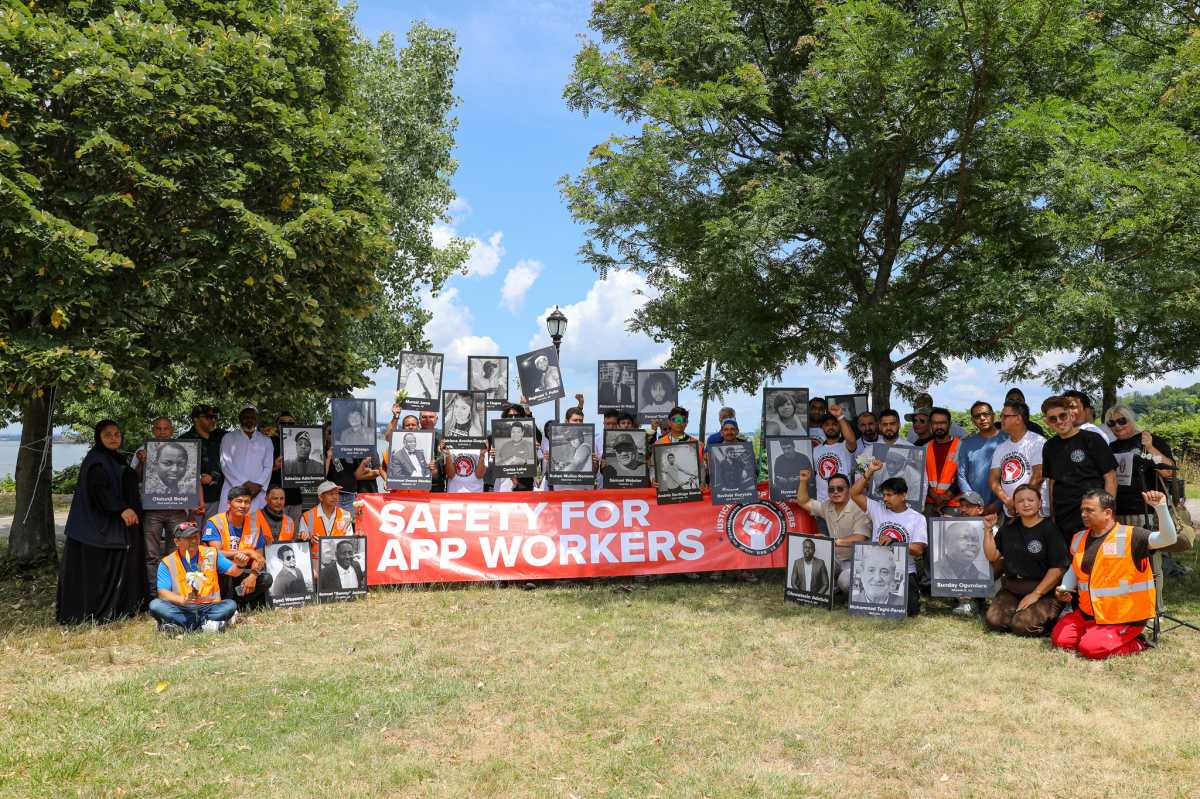By Ronda Kaysen
If the building wasn’t contaminated before officials demanded demolition work stop, it sure is now.
Last April, demolition work at 189 Broadway ground to a halt when U.S. Rep. Jerrold Nadler and Community Board 1 vice chairperson Catherine McVay Hughes raised concerns about possible asbestos and 9/11 contamination in the building.
The two-story building sits one block east of the World Trade Center site and is being demolished by the Metropolitan Transportation Authority to make way for a $785 million Fulton St. transit hub. The M.T.A. had already removed the roof of the building before work stopped. Soon after, a major rainstorm soaked the structure and mold grew. It was unclear last April if the building was contaminated with any Trade Center toxins. It is now — without question — a toxic mess of mold run rampant.
“The building has been sitting soaking wet,” Benn Lewis, a vice president for Airtek Environmental, an environmental consultant for the M.T.A., said at a Community Board 1 World Trade Center Committee meeting this week. “It needs to be gut stripped.”
After months of tests by M.T.A. consultants showed no lingering 9/11-related contamination, the Environmental Protection Agency gave the M.T.A. the green light to demolish the building. Work will now begin imminently.
“We’re ready to go,” William Wheeler, the M.T.A.’s director of the Fulton transit hub project, said at the C.B. 1 meeting. “We’re going to be moving ahead very soon.”
After Sept. 11, 2001, professionals cleaned the building twice. Within a year all the tenants had reoccupied it. The only known damage to the building was a broken window on the second floor. World of Golf occupied the top floor and the Stocking Exchange, a lingerie shop, occupied the ground floor until the M.T.A. seized the building through the powers of eminent domain in order to build the new transit hub.
The new transit hub will connect the confusing Broadway/Nassau/Fulton stations into a cohesive system and connect it to the W.T.C. Calatrava PATH station, which is currently under construction.
When construction crews began hauling debris off of the building’s roof last spring, Hughes and Nadler voiced concerns that the debris might contain Trade Center toxins and the E.P.A. should oversee the demolition plans.
“The number one concern is everyone’s health as we have seen from our experiences concerning Downtown air,” Robert Gottheim, director of district relations for Nadler, said in a telephone interview. “We have to make sure that all safety precautions are done properly.”
E.P.A. has overseen the demolition of some 9/11-affected buildings, like the Deutsche Bank building and Fiterman Hall, which were so gravely impacted by the collapsing towers that they became uninhabitable, toxic cauldrons. One eighty-nine Broadway, however, was not unlike most Lower Manhattan buildings that have been demolished to make way for new construction: it was minimally impacted, cleaned and soon reoccupied.
At the urging of elected officials, environmental consultants scoured 189 Broadway for signs of contamination — sifting through newspaper reports of the day, interviewing previous tenants, and conducting controlled demolitions inside the building. In the end, they found no signs of any 9/11-related contamination.
“We really couldn’t find any remaining impact,” said Lewis.
The building does contain asbestos and the M.T.A. assumes that any paint in the building may contain lead. Nadler would like to see all buildings near the site undergo a similar process to 189 Broadway.
“All buildings [facing demolition] that are in Lower Manhattan need to have a characterization report, like 189 Broadway,” said Gottheim. “These buildings are near the [W.T.C.] site, they had tons of dust and debris from the burning site. We have to ensure that a demolition is done properly so that it doesn’t cause any health problems.”
Concerns about construction delays should be secondary, said Gottheim.
Not everyone was confident that a building that appeared clean might actually be clean. “I’m a little perplexed by your reliance on photographs,” Jo Polett, a Tribeca resident whose apartment was eventually cleaned by the E.P.A. after lingering contaminants were found there, said at the public meeting. “A place can be contaminated and you can’t see it.”
Because the building is now infested with mold, contains asbestos and possibly lead paint, it will be treated as a hazardous site when cleaned. All the porous material — including everything from furniture to sheetrock — will be bagged and removed from the site before the building is demolished.
“The building will be a shell and it will be demolished as any building would be,” said Lewis.
On Tuesday, Hughes seemed content with the decision to move forward with the demolition. “If E.P.A. is happy with their plan, then that’s fine,” she told Downtown Express.
Ronda@DowntownExpress.com


































